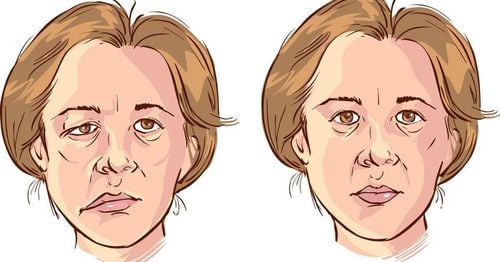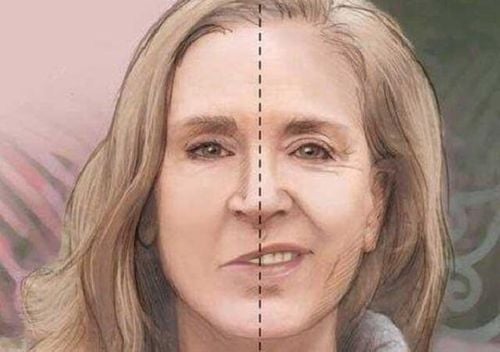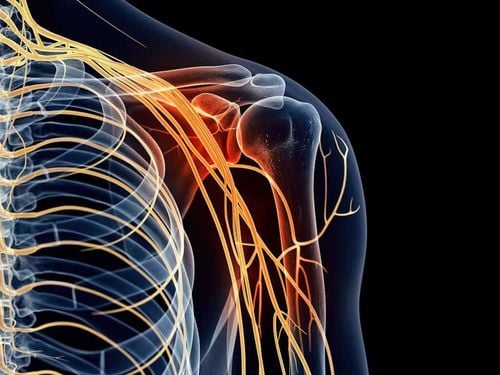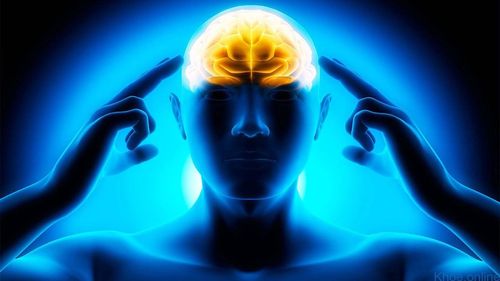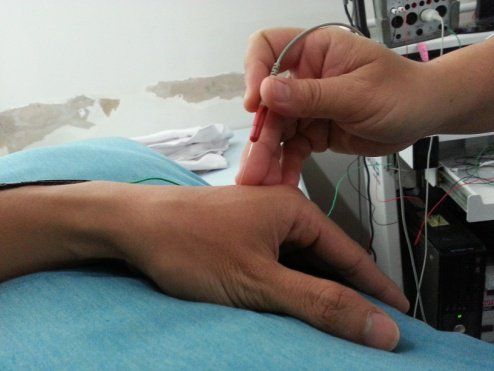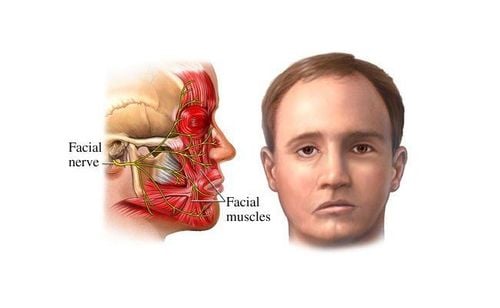This is an automatically translated article.
Hemifacial spasm is a condition in which half of your face is expressed. It usually begins with twitching around one eye. Although this disease is not serious, it can affect daily life.
1. What is a hemifacial convulsion?
The muscles of the facial region are controlled by the facial nerve (also called nerve VII or seventh cranial nerve). There is one facial nerve on each side. It starts deep within the brain and travels through many structures to reach the face. The facial nerve transmits signals from the brain to the facial muscles to perform muscle contraction or relaxation.
When the facial nerve is pinched somewhere in the path of the nerve, it affects the signals that control the muscles of the face. This can cause muscle spasms or hemifacial spasms, when you don't control the muscle contractions.
2. Causes of hemifacial convulsions
Hemifacial seizures occur in both men and women, although women tend to have them more often than men. Symptoms usually begin in middle age. The cause of hemifacial seizures is still unclear.
Hemifacial spasms are usually caused by irritation or damage to nerves in the face. Hemifacial spasm is usually caused by a blood vessel pressing on nerves in the face near where the nerves connect to the brain stem. When this happens, the facial nerves can act involuntarily by sending out nerve signals that cause twitching of the facial muscles. Spontaneous signaling is one of the main causes of these spasms.
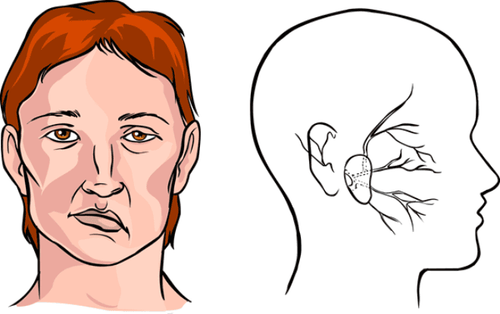
Liệt mặt là nguyên nhân hiếm gặp của co thắt nửa mặt
- One or more tumors pressing on the facial nerve
- Effects from a bout of facial paralysis, a condition that can cause temporary partial facial paralysis paralyzed.
3. Symptoms of hemifacial convulsions
The first symptom of hemifacial spasm is an involuntary twitching of one side of the face. Muscle spasms usually begin in mildly twitching eyelids and may not cause any problems. This spasm is known as eyelid twitch. You may notice that seizures become more pronounced when you are nervous or tired. Sometimes, eyelid spasms can cause the eye to close completely or slant.
Over time, seizures may become more noticeable in other areas of the face. The seizures can also spread to other parts of the face and body, including: eyebrows, cheeks, areas around the mouth such as the lips, chin, jaw, upper neck.
In some cases, hemifacial spasm can spread to all the muscles on one side of the face. Spasms can also occur while you are sleeping. As the spasms take place, you may also notice other symptoms such as:
- Changes in hearing
- Noise in the ears (tinnitus)
- Ear pain, especially behind the ears
- The the spasm spreads down your entire face
4. How is hemifacial convulsion diagnosed?
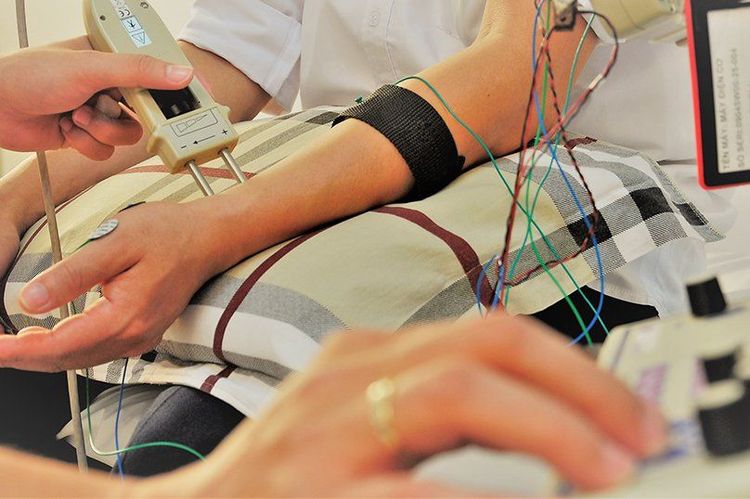
Điện cơ kim
Diagnosis of hemifacial seizures can be based on history taking and observation of involuntary onset seizures of unilateral facial muscle groups. Usually no neurological deficit is found. However, on careful examination of severe and prolonged hemifacial seizures, mild weakness of the facial muscle groups on the same side of the seizure may be seen.
Electromyography may be useful in diagnosing hemifacial seizures when paroxysmal impulses are seen from the groups of facial muscles involved. However, this test is rarely used, but more often is used in imaging to identify the disease. The patient underwent a contrast-enhanced CT or MRI to rule out other causes.
Sometimes on MRI, dilated and enlarged vertebral arteries can be seen inserted into complexes VII, VIII. The role of imaging in hemifacial seizures is only to rule out causes other than neurovascular compression.
5. Treatment of hemifacial convulsions
Currently there is no cure for this condition, but there are a number of different treatments for hemifacial seizures such as:
Medications: medications can relieve mild or infrequent spasms. Anti-seizure medications such as carbamazepine and topiramate may be helpful for some people with hemifacial spasms. These drugs work by calming nerve impulses. Benzodiazepines such as diazepam and clonazepam are sedatives. They help relax muscles but can also make you feel drowsy. Response to medications can vary and it may take time to find the right dose. The medicine may need to be taken for a long time.
Injection: Botulinum toxin is produced by the bacterium Clostridium botulinum. It is often associated with toxins that cause food poisoning. However, when used in controlled doses, it can safely relax excessively contracted muscles. It is injected into the facial muscles and blocks the signals from the nerves, thus stopping the spasm. The effects of an injection begin within a few days and last for 2-3 months. About 7-8 people out of 10 with hemifacial spasms are helped by botulinum injections.
Side effects of injections are usually drooping eyelids and double vision. They usually go away on their own after 1 or 2 weeks.
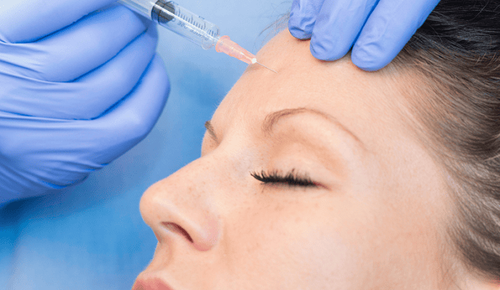
Tiêm botulinum toxin
6. Prevention
The following lifestyle and home remedies can help you deal with hemifacial spasms:
- Hemifacial spasm can be controlled through home treatment, medication, or surgery. Follow your doctor's instructions and you're likely to keep spasms to a minimum.
- Untreated hemifacial spasms can be frustrating for the patient over time as they become noticeable, especially if the seizure spreads over the entire face. Talking to friends and family about spasms will help you feel more supported when it comes to managing the symptoms of this condition. Joining a support group can help you learn how to treat and continue to manage your spasms.
Vinmec International General Hospital is a high-quality medical facility in Vietnam with a team of highly qualified medical professionals, well-trained, domestic and foreign, and experienced.
A system of modern and advanced medical equipment, possessing many of the best machines in the world, helping to detect many difficult and dangerous diseases in a short time, supporting the diagnosis and treatment of doctors the most effective. The hospital space is designed according to 5-star hotel standards, giving patients comfort, friendliness and peace of mind.
In April & May 2021, when there is a need for examination and treatment of Hemifacial Convulsions at Vinmec Central Park International General Hospital, customers will enjoy double incentives:
- Free specialist examination
- 50% reduction in costs for customers with post-examination treatment indications. The program is limited to the corresponding technique of each hospital and to customers who perform this treatment technique for the first time at Vinmec.
Please dial HOTLINE for more information or register for an appointment HERE. Download MyVinmec app to make appointments faster and to manage your bookings easily.




